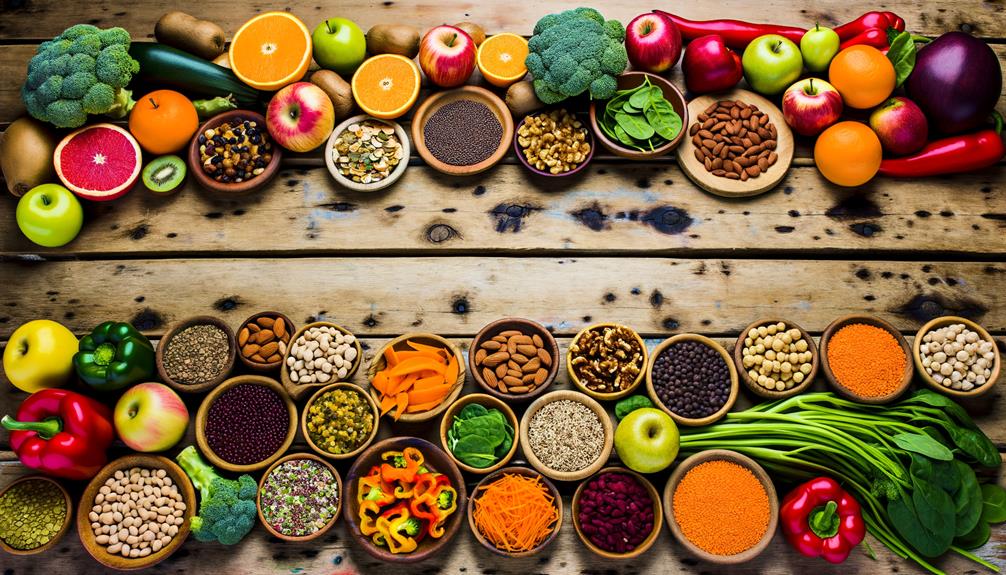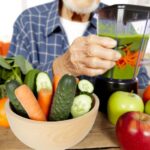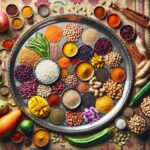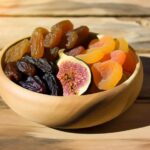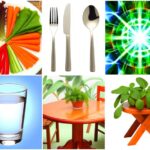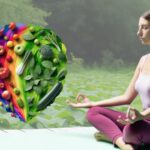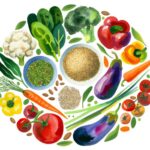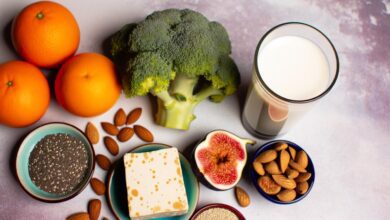Ever wondered how a diet can be gluten-free and vegan at the same time? You’re not alone. Many people assume that merging these two dietary choices could be complex and restrictive. However, it’s more accessible and enjoyable than you might think! With an abundance of gluten-free grains, fruits, vegetables, and plant-based proteins, you can maintain a balanced, nutrient-rich diet that respects your health needs and ethical values. Let’s explore this more closely, and by the end, you’ll have a comprehensive understanding and perhaps even some inspiration for your own culinary adventures.
Key Takeaways
- Gluten-free veganism excludes wheat, rye, barley, and animal products
- Essential gluten-free grains include quinoa, brown rice, buckwheat, amaranth, millet, sorghum, and teff
- Protein sources for gluten-free vegans include quinoa, tempeh, nutritional yeast, nuts, legumes, chia seeds, hemp seeds, and sunflower seeds
- When shopping for gluten-free vegan products, it’s important to check labels for hidden gluten and animal-derived ingredients, opt for certified gluten-free options, and be mindful of sweeteners
Understanding Gluten-Free Veganism
Embracing a gluten-free, vegan lifestyle means excluding foods like wheat, rye, barley, and all animal products from your diet, while enjoying an abundance of fruits, vegetables, plant-based proteins, and naturally gluten-free whole grains. As you start to follow a gluten-free vegan diet, you’ll discover a whole new world of foods that not only nourish your body but also respect all living creatures.
Understanding gluten-free veganism involves recognizing the foods that align with this lifestyle. You’ll feast on delicious fruits, vegetables, legumes, and nuts. Plant-based proteins become your go-to, with quinoa, brown rice, buckwheat, and amaranth serving as excellent alternatives to gluten-containing grains.
You’ll also learn to avoid gluten, especially hidden in foods you may not expect. Reading labels on vegan products becomes essential. Look for Vegan Packaged, gluten-free foods, and gluten-free products that clearly state they are free of animal-derived ingredients. Remember, compassion starts on your plate, and by choosing a gluten-free vegan lifestyle, you’re serving others, the planet, and yourself. So, dive into this journey of understanding gluten-free veganism, and embrace the healthful, compassionate lifestyle it promotes.
Essential Gluten-Free Grains
As you delve into the realm of gluten-free veganism, you’ll discover essential gluten-free grains like quinoa, brown rice, buckwheat, amaranth, millet, sorghum, and teff. These not only add diversity to your meals but also provide vital nutrients.
For vegans, these grains are more than just gluten-free food products; they are staples in a healthy, diverse diet. Quinoa and brown rice, for instance, are favorites for their high protein and fiber content. You’ll find these grains in numerous recipes geared towards those on gluten-free diets.
Buckwheat and amaranth offer a unique, nutty flavor, making them perfect for baking or creating a warm, comforting bowl of porridge. If you’ve been diagnosed with gluten sensitivity (NCGS) and need to avoid gluten, these grains are safe options, as they do not contain gluten.
Lastly, grains like millet, sorghum, and teff are ancient foods that contain a wealth of nutrients. While they may not be as commonly used in modern western diets, they are certified gluten-free and offer a variety of textures and flavors to explore. So, broaden your palate and embrace these essential gluten-free grains in your cooking.
Gluten-Free Vegan Protein Sources
Navigating the world of gluten-free veganism, you’ll often find proteins in unexpected places, including quinoa, tempeh, nutritional yeast, nuts like almonds, walnuts, and pistachios, as well as legumes such as chickpeas, lentils, and black beans. Each of these gluten-free vegan protein sources plays a critical role in vegan nutrition, offering essential nutrients while helping you avoid animal products.
But that’s not all. Chia seeds, hemp seeds, and sunflower seeds are also excellent gluten-free food products that pack a protein punch. You can sprinkle them on salads, mix them into smoothies, or use them as a topping for your favorite gluten-free dishes. Similarly, tofu and edamame are versatile, providing a good source of protein while expanding your culinary horizons.
Plant-based milk such as almond, soy, and oat milk, are also part of the protein landscape. They’re not only rich in protein but also offer a creamy texture and a delightful taste. And let’s not forget about amaranth and buckwheat, gluten-free grains that offer protein and fiber. With these options, embracing a gluten-free vegan lifestyle doesn’t mean compromising on taste or nutrition.
Savoring Gluten-Free Vegan Snacks
Now that you’re well-versed in gluten-free vegan protein sources, let’s explore the world of gluten-free vegan snacks, a realm brimming with flavorful fruits, hearty vegetables, and plant-based proteins that can satisfy your cravings without compromising your dietary choices. Transitioning to a gluten-free vegan diet can be challenging, but with a little creativity and planning, you can create a diverse array of snacks to help you avoid eating gluten.
Whether you’re a vegan with celiac disease or non-celiac gluten sensitivity, or you’re just interested in going gluten-free, there are numerous tasty, convenient snack options available.
| Snack Type | Gluten-Free? | Vegan? |
|---|---|---|
| Fresh fruits and vegetables | Yes | Yes |
| Hummus with veggie sticks | Yes | Yes |
| Rice cakes with almond butter | Yes | Yes |
| Gluten-free vegan energy bars | Yes | Yes |
Shopping for Gluten-Free Vegan Products
When it’s time to fill your shopping cart, knowing how to choose the right gluten-free vegan products can take the hassle out of your grocery trips. Adopting this diet means you’ll avoid foods that contain gluten, a protein found in wheat, barley, and rye. You’ll also cut gluten from your eating habits, which can be beneficial for those with celiac disease or gluten sensitivity.
Here’s a helpful guide for shopping for gluten-free vegan products:
- Opt for naturally gluten-free foods:
- Whole grains like quinoa, brown rice, buckwheat, and amaranth.
- Fresh fruits and vegetables, which are packed with vitamins and minerals.
- Legumes, plant-based proteins, and nuts for your protein needs.
- Be cautious while buying convenience foods:
- Check labels for hidden gluten and animal-derived ingredients.
- Choose certified gluten-free products to avoid cross-contamination.
- Mind your sweeteners:
- Avoid sugars that use bone-char for filtering and honey, which isn’t vegan.
Frequently Asked Questions
Does 100% Vegan Mean Gluten-Free?
No, 100% vegan doesn’t mean it’s gluten-free. Navigating the vegan gluten confusion can be like a maze. Always check gluten-free labeling to avoid vegan diet pitfalls. Misconceptions about gluten can challenge a gluten-free vegan lifestyle.
What Foods Are Both Vegan and Gluten-Free?
You’ll love quinoa’s benefits in your rice dishes. Enjoy gluten-free pasta, cereals, and vegan desserts. Soy products, nutritional yeast, and chia seeds are great too. Don’t forget plant-based milks for your vegan smoothies.
Can Vegans Eat Gluten-Free Bread?
Absolutely, you can enjoy gluten-free bread on a vegan diet. Just ensure it’s free from animal products. Look for vegan-friendly brands, read labels carefully, and consider nutritious DIY vegan bread using gluten-free grains.
What Do Gluten-Free Vegans Eat for Protein?
You can nourish your body with protein-rich quinoa, legumes, soy-based proteins, and vegan protein shakes. Feast on gluten-free nuts, seeds, and brown rice. Enjoy the protein in lentils, amaranth, and chia seeds.
